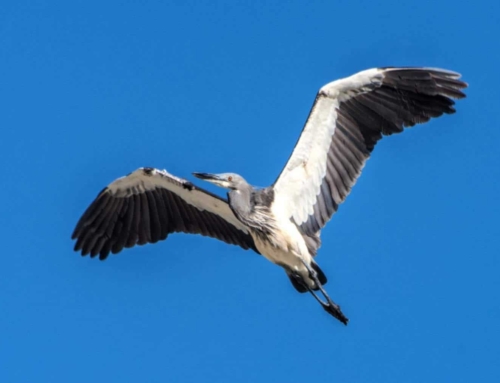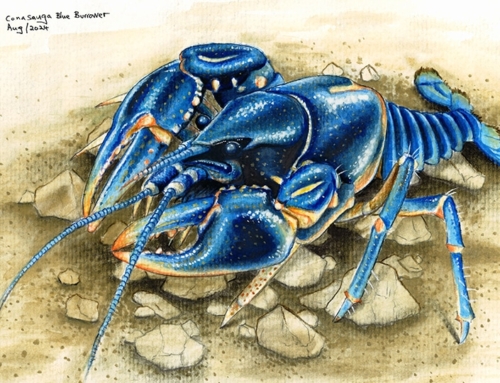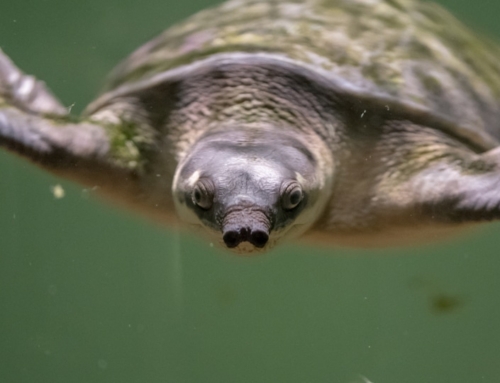2021 has presented many challenges for conservation, with COVID-19 continuing to prevent safe engagement with communities, causing delays or cancellations to in-person events, and affecting marginalised communities the hardest. However, our team at Synchronicity Earth continue to be inspired by the resilience and resourcefulness of our partners, who continue to do extraordinary work to protect wildlife all around the world. It is our pleasure to share a small sample of their stories with you to end the year on a note of conservation optimism.
A blessed river
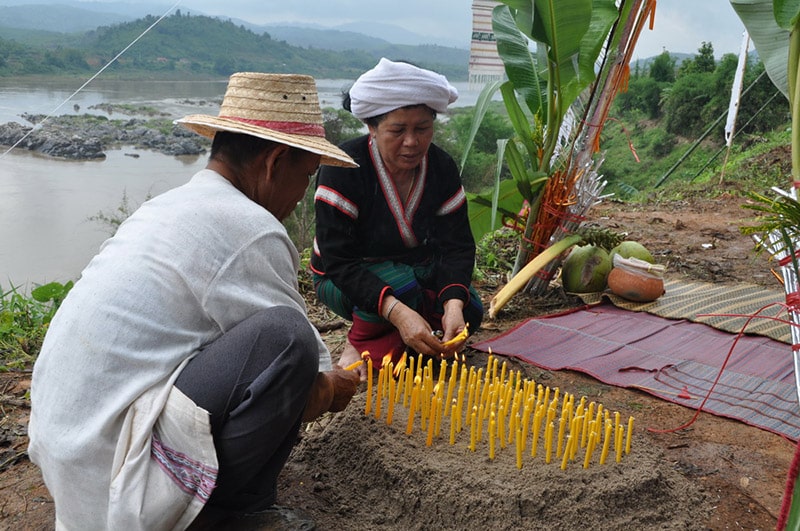
Embedding local religious practices into river conservation has become an important part of Living River Association’s approach to protecting the Ing River. Image © LRA
The Ing River in Thailand holds some extraordinary freshwater wildlife from Jullien’s golden carp, a Critically Endangered fish with stunning gold stripes which can grow up to 165 centimetres and live up to fifty years, to the Asiatic softshell turtle with its leathery shell and olive-green skin and the Mekong freshwater stingray, which can be as wide as 62 centimetres.
However, the wildlife of this river has been declining due to an unhealthy mix of unsustainable fisheries and agriculture, hydropower development, and rapid climate change. For communities living along the Ing River in northern Thailand, fishing used to play a vital role in their everyday existence, but declining fish populations mean that the once strong connection between people and their wetlands is at risk of falling apart.
Faced by the urgency of the situation, a local organisation called Living River Association has implemented an ingenious approach which incorporates local religious practices into the management of Fish Conservation Zones.
The buddhist practice of river ordinations, a blessing ceremony in which a cable is strung across a river and hung with a monk’s robes, ordains a river the same way that people are ordained as monks. This ceremony solidifies the villagers’ respect for an existing Fish Conservation Zone, which strengthens its management and conservation impact.
Recognising this, Living River Association helped strengthen the management of existing Fish Conservation Zones by organising river ordinations in Buddhist communities and other blessing ceremonies in Christian communities. And the results speak for themselves. In one example, this practice has led to increases in the population of 17 freshwater species and the return of nine other species in only five years.
A love story: companionship in orangutans
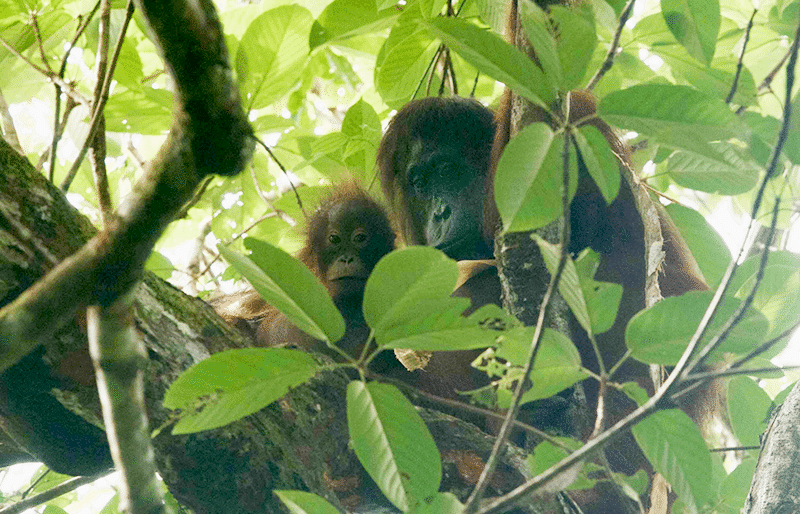
Felicity and Ocean, two orangutans observed by Hutan’s orangutan research team. Image: Hutan
Jenny the orangutan was the first wild orangutan who allowed Hutan’s now world-renowned research team to observe her daily activities when they started observing orangutans in the forests of Kinabatangan, Malaysian Borneo, in 1998.
The research team followed her for 25 years and believed her to be 55 years old- one of the oldest orangutans ever known- when she passed away in July 2020, having had at least six offspring.
Her most recent baby, Ocean, was only seven years old when Jenny passed, and Hutan were naturally concerned about how she would fare after the death of her mother. The bond between an orangutan mother and her young is one of the strongest in nature, particularly with their daughters, who will often continue to visit their mothers throughout their lives.
However, Hutan need not have worried. Not only is Ocean managing to find food, build her nest, and thrive in the forest thanks to her mother’s teachings, but she has been spotted in the company of a new older female called Felicity.
The research team was able to follow the two females for several weeks and observed Felicity taking care of Ocean as if she was her own daughter. They sleep in the same nest, Felicity carries Ocean from tree to tree, and they spend a lot of time in social grooming and play interaction.
Reconnecting with the natural world in the Cook Islands

The vacca (or vaka) is a traditional Polynesian ocean canoe with two hulls. Image © Sei Media (Teupoko Ariihee)
Kōrero O Te `Ōrau in Cook Islands Māori translates to ‘knowledge of the sky, land, and sea’. Pacific islanders have traditionally acquired a wealth of such knowledge, which held as much importance historically as this knowledge does today in supporting the management of natural resources and adapting to changes in the environment.
However, the shifts in global culture away from the natural world and towards technology and development has begun to diminish the relationship between islanders and their environment, particularly in young people.
This year Synchronicity Earth has supported Kōrero O Te `Ōrau’s education programme, which focuses on strengthening the connection of young people with the natural world through scientific and culture-based learning. A key part of this programme has been training in traditional ‘Vacca Voyaging’ skills and inclusion of some of the students in a long-distance voyage to the ‘Pa Enua’ or outer islands of the Cook Islands.
Part of this programme focuses on engaging young men who need a second chance, often people who have dropped out of school, are unemployed, or have been in some trouble with the law. This year 11 such young men joined the course (which received total 57 students) and one of them took part in the epic Vacca Voyage.
A global effort for one of our largest and remotest ecosystems
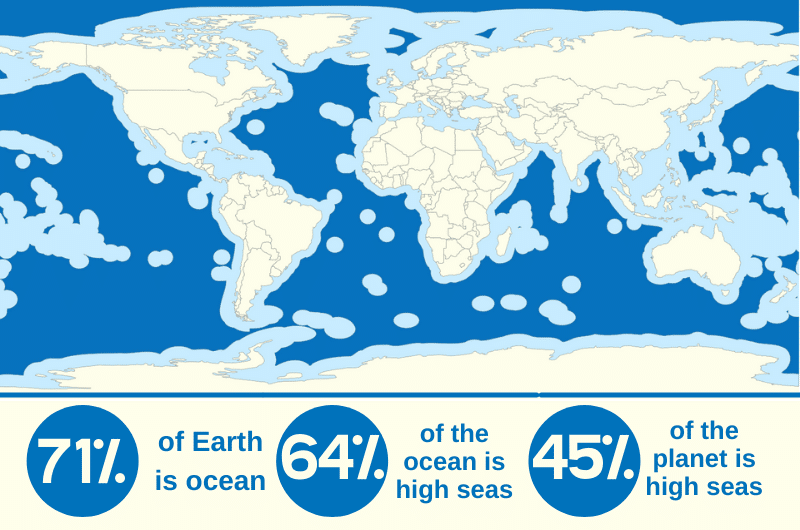
Protecting the high seas is an urgent priority for global marine conservation. Image: Synchronicity Earth/Wikimedia Commons CC BY-SA 3.0 CL DEED
The vast majority of our planet is ocean, and 64 per cent of the ocean is ‘high seas’; the area of the ocean that lies beyond the national jurisdiction of coastal nations.
Currently, there are very few regulations on the high seas, meaning that biodiversity exploitation, particularly by heavily subsidised industrial fishers, goes virtually unchecked.
Trying to remedy this is extremely challenging, as these waters are not owned by any one country; an agreement must be reached through the United Nations (UN), and this process is slow and difficult. The need for international protection in the high seas was first raised at the UN in 2004, but an agreement to develop a treaty was only reached over a decade later in 2017!
Since then, the High Seas Alliance has engaged in three Intergovernmental Conferences at the UN to carry out the challenging negotiations around the details of this treaty, which COVID-19 has delayed by nearly two years.
However, the last round of negotiations on this treaty will hopefully take place in March 2022. If a strong High Seas Biodiversity Treaty is signed in 2022 it will be a monumental achievement for marine life in some of the most remote parts of the ocean.

